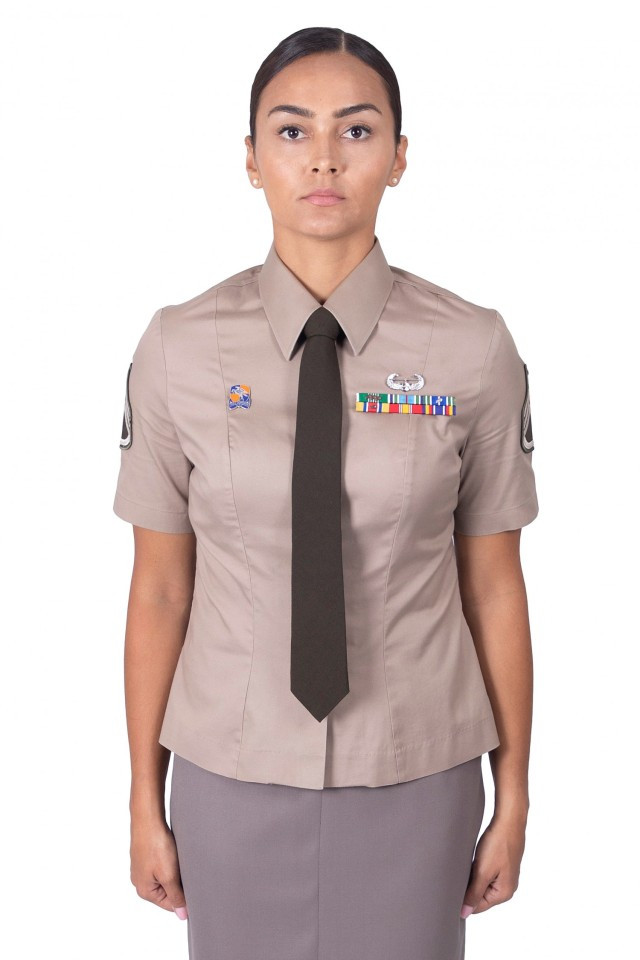The landscape of the U.S. Army Soldier Combat Uniform has undergone significant changes, marking a new era in military apparel. As of October 1, 2019, the Universal Camouflage Pattern, widely recognized as the Army Combat Uniform (ACU) pattern or Digital Camouflage, was officially retired. This transition signifies more than just a change in aesthetics; it represents a strategic shift towards enhanced functionality and soldier effectiveness in diverse operational environments.
 U.S. Army Reserve Soldier in ACU during deployment ceremony
U.S. Army Reserve Soldier in ACU during deployment ceremony
The phasing out of the ACU pattern began in 2014, paving the way for its successor: the “Scorpion” pattern, officially known as the Operational Camouflage Pattern (OCP). This move was largely driven by feedback from soldiers who widely considered the OCP a substantial upgrade over the ACU. Command Sgt. Maj. Dennis Law emphasized this sentiment, stating, “With the OCP, we’ve been able to improve upon the functionality of the ACU and carry that forward into a uniform that has already gained more functionality and more popularity than the ACU ever had.” The adoption of the OCP aims to foster greater uniformity within the force, providing soldiers with a combat uniform that offers superior camouflage capabilities and a more professional appearance.
The shortcomings of the ACU pattern became increasingly apparent in the early 2000s, prompting serious concerns that reached Capitol Hill. Responding to these issues, Congress passed House Resolution 2346 in 2009. This resolution mandated the Department of Defense to expedite the provision of combat uniforms with camouflage patterns specifically tailored to the Afghan theater of operations for deployed personnel.
 U.S. Army Reserve Soldier in ACU operating a machine gun during training
U.S. Army Reserve Soldier in ACU operating a machine gun during training
In the quest for a more effective soldier combat uniform, the U.S. Army embarked on extensive testing, involving computer simulations and field trials across various global locations. Ultimately, the “Scorpion” pattern emerged as the top performer. Unlike the digital design of the ACU, “Scorpion” adopts a more naturalistic approach, incorporating colors and shapes commonly found in organic environments. This shift towards an organic camouflage design philosophy marks a significant improvement in blending soldiers into diverse backgrounds.
While the OCP combat uniform has become standard, logistical considerations mean some soldiers still possess ACU patterned gear. Leaders like 1st Sgt. Kimberly Jones advocate for complete uniformity, suggesting a full transition to OCP gear. Beyond camouflage effectiveness, the OCP uniform is also perceived to offer enhanced durability. “The material is heavier, so it lasts longer before it starts to fade,” noted Jones, highlighting a practical benefit for soldiers in the field.
The Army’s commitment to providing soldiers with the best possible combat uniforms extends beyond the standard OCP. Recognizing the diverse operational environments soldiers face, the Improved Hot Weather Combat Uniform (IHWCU) was rolled out in July 2019, initially to soldiers in hot climates like Hawaii and Fort Benning, Georgia. Utilizing the OCP color scheme, the IHWCU is constructed from a rapid-drying nylon/cotton blend, engineered to maximize comfort and performance in high-temperature theaters. Soldiers can anticipate the IHWCU becoming available in military clothing stores by February 2020, further enhancing the range of soldier combat uniform options.
Looking beyond 2020, the U.S. Army continues to innovate in soldier combat uniform technology. Future developments are focused on integrating materials that offer concealment from ground-based radar systems. Additionally, research is underway to develop specialized fabric coatings that could provide warmth without requiring bulky layering, showcasing the ongoing commitment to enhancing soldier comfort and protection through advanced uniform design. The evolution of the soldier combat uniform reflects the Army’s dedication to equipping its personnel with the most effective and adaptable gear for mission success.
